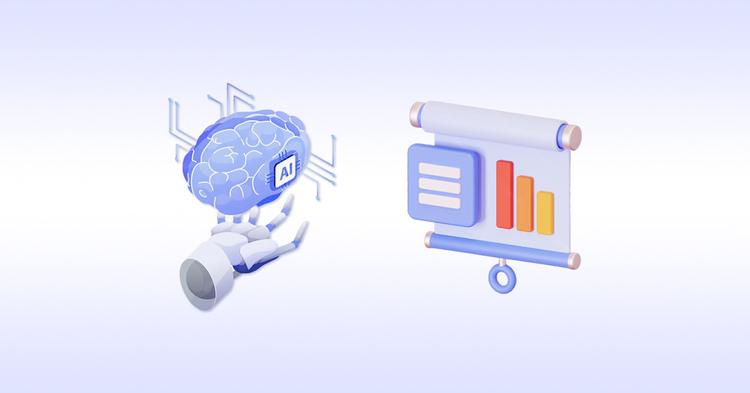The Agentic AI Revolution in Lending
September 29, 2025

Samesurf is the inventor of modern co-browsing and a pioneer in the development of core systems for Agentic AI.
The lending industry today operates in a high-stakes, fast-moving environment. Borrowers expect near-instant approvals, regulators demand strict compliance, and lenders face mounting pressure to balance speed with accuracy. Traditional workflows, built on manual document checks, legacy systems, and labor-intensive verification, struggle to meet these demands. Slow processes, human error, and operational bottlenecks are no longer acceptable in a market where efficiency is a competitive advantage.
Agentic AI is completely changing the game. This advanced form of artificial intelligence goes well beyond standard automation, as it has the ability to act autonomously to assess risk, analyze documents, and make informed, goal-driven decisions. Agentic AI accelerates the loan process without sacrificing accuracy or compliance by handling complex tasks that once required teams of human analysts. At the core of this transformation is Samesurf’s patented technology, which ensures AI enabled agents can operate with precision, security, and built-in human oversight. By leveraging these capabilities, lenders can create a smarter, faster, and more trustworthy lending experience that meets both business and borrower expectations.
The Loan Processing Dilemma: Balancing Speed and Security
Securing a loan has always been a detailed, multi-step process that falls at the heart of both personal and commercial finance. Traditionally, it involves a highly manual journey that begins with the creation of a loan file, moves through document review, credit checks, asset verification, and ends with final approval. This path is far from simple. For example, a single mortgage application can pass through more than 30 distinct touchpoints before obtaining approval. Each step, from verifying income and employment to assessing assets, relies heavily on human expertise and precision.
These manual workflows carry real costs and create operational bottlenecks that directly affect a lender’s efficiency and bottom line. On average, closing a standard mortgage can take five weeks, while personal loans may require several days to multiple weeks for approval and funding. In today’s fast-moving, digital-first economy, such delays frustrate customers and increase the risk of abandoned applications, particularly among younger, digitally native borrowers. The dependence on manual data entry and verification also introduces a significant risk of human error, with industry studies citing error rates that fall between 6.5 and 10 percent. Mistakes can lead to compliance penalties, delays, and operational disruptions.
This combination of inefficiency and risk exposes a persistent dilemma in lending. Lenders often face a choice: meet the speed expectations of consumers or satisfy the stringent accuracy and security demands of regulators. Cutting corners can jeopardize compliance, while maintaining traditional workflows slows the process and can result in lost business. The dilemma is not simply a technological gap but a structural challenge that makes it nearly impossible for traditional, linear systems to achieve both speed and reliability. Agentic AI emerges as a solution to this dilemma by offering a path to accelerate loan processing while upholding accuracy and regulatory compliance, effectively resolving a long-standing operational bottleneck.
The Proactive Partner: Demystifying Agentic AI
A new class of technology is reshaping the way organizations think about automation. This new construct is known as Agentic AI, an approach that introduces autonomous, goal-driven intelligence that is capable of operating with or without human input. Instead of waiting for commands, it can set objectives, create a plan, and carry out tasks on its own. At its core is often a large language model, which provides the reasoning needed to understand context, surface relevant information, and propose solutions.
The difference from traditional automation is clear. Conventional systems are built to follow strict rules and perform repetitive, structured tasks such as assembly line work or data entry. Their limitation lies in adaptability. If conditions change, a human must step in. A rules-based chatbot, for instance, can answer FAQs but cannot interpret intent or emotion, while Agentic AI can adapt in real time, analyze a situation, learn from new data, and make decisions that continuously optimize workflows.
This shift is more than an upgrade in task completion. It changes the relationship between humans and technology. Traditional AI is reactive, much like a GPS that provides directions only after you enter a destination. Agentic AI is more like a skilled driver. It knows the route, monitors traffic, adjusts to delays, and suggests alternatives to ensure you arrive on time. In this manner, it does not just complete tasks but anticipates, adapts, and takes initiative to achieve broader goals.
The result is a new kind of partnership. Agentic AI takes on the complex, repetitive work that slows teams down, while humans have more time to focus on creativity, strategy, and judgment. In industries such as finance, where compliance and ethics are critical, this distinction matters. The technology augments rather than replaces, thus empowering professionals to deliver faster and more accurate outcomes without sacrificing oversight or trust.
Automating the Underwriter: Transforming Loan Processing
Agentic AI is redefining loan processing by introducing a level of intelligence far beyond traditional digitization. Acting as a kind of “digital underwriter,” these systems can handle the core tasks of document review and data validation with speed and precision that humans cannot match.
The process starts with automated document analysis. Using Optical Character Recognition and Natural Language Processing, AI agents can collect, classify, and extract key details from scanned files, PDFs, and email attachments. Information such as income, liabilities, and employment history is automatically pulled into the Loan Origination System, shrinking turnaround times from days to minutes. The AI agents do more than extract data: they cross-check values across multiple documents, flagging mismatched addresses, duplicate statements, or other inconsistencies.
This intelligence extends into risk assessment and fraud detection. By analyzing massive datasets, AI agents are able to identify subtle patterns and anomalies that traditional systems or human reviewers might overlook. It can catch signs of tampering, unusual financial activity, or concentration risk, and shift risk management from a periodic process into a continuous, real-time safeguard.
The impact on borrowers is immediate. With complex tasks automated, lenders can offer near-instant pre-approvals and filter out ineligible applications early. This reduces wasted resources and gives borrowers a faster, more transparent experience that builds trust and improves retention.
The greatest advantage lies in contextual reasoning. Unlike traditional tools that simply extract numbers, Agentic AI understands their meaning. For example, it can recognize that “EBITDA” on one statement equals “Operating Profit” on another, then normalize the data for accurate comparisons. By eliminating the errors that often result from manual spreadsheet work, the system produces cleaner, more reliable results.
Real-Time Compliance: Meeting Regulatory Demands with Confidence
Compliance remains one of the most complex and resource-heavy parts of lending. Regulations demand accuracy, transparency, and thorough documentation at every step of the loan process. For many institutions, meeting these requirements means dedicating entire teams to oversight and review, which slows down workflows and adds significant costs.
Agentic AI changes the equation by embedding compliance into the loan process itself. Intelligent agents can automatically check documents against regulatory standards, verify disclosures, and ensure that sensitive data is handled properly. Instead of waiting until the end of the workflow to run compliance checks, these systems operate continuously, catching issues in real time before they become costly errors.
The benefit goes far beyond speed. By logging every action and decision, Agentic AI creates a transparent audit trail that regulators can easily review. This not only reduces the risk of non-compliance but also builds trust with auditors and oversight bodies.
For lenders, the shift is transformative. Compliance no longer needs to be a separate, time-consuming layer of review. With AI agents embedded throughout the process, institutions can maintain accuracy and accountability without slowing down approvals; a balance that was once out of reach.
Samesurf’s Patented Technology
The power of Agentic AI lies not just in theory but in its ability to function in real-world environments. To deliver on its promise, an AI enabled agent must interact with websites, fill out forms, and navigate dynamic content exactly as a human would. This capability requires a strong technological foundation, and that is where Samesurf’s patented innovations serve as a revolutionary touchpoint.
Samesurf’s intellectual property enables AI-enabled devices to replicate human browsing behavior securely within a cloud-based environment. This makes it possible to turn the idea of a “digital underwriter” into a reality, allowing autonomous agents to execute complex loan workflows from start to finish.
Equally important is human oversight. Even advanced systems achieve high but not perfect accuracy when handling sensitive data. Samesurf addresses this with patented features that let human officers observe, supervise, and step in as required. With in-page control passing, a loan officer can instantly take over an AI session to resolve an issue without losing visibility into the broader workflow.
Trust is also built into the framework. Features such as automated redaction and input field blocking ensure that personal and financial data remain secure during any simulated sessions, whether an agent or a human is involved. This protects both the borrower and the lender while reinforcing confidence in the process.
Together, these capabilities provide a complete solution. Samesurf’s technology combines autonomous execution with security and human-in-the-loop controls, ultimately giving lenders a way to harness Agentic AI responsibly and effectively.
The Strategic Imperative for Lenders
The traditional model of loan processing, built on manual and linear workflows, can no longer meet customer expectations or keep pace with evolving regulatory requirements. Lenders frequently face the impossible choice between speed and accuracy, and in today’s competitive market, that trade-off is no longer acceptable. Delays, errors, and inefficiencies not only frustrate customers but also increase operational risk, thus creating a clear need for smarter, more adaptive solutions.
Agentic AI addresses these challenges by automating document analysis, risk checks, and pre-approvals by cutting processing times from weeks to minutes while improving accuracy and minimizing errors. These systems act as proactive partners by adapting to new information and anticipating potential issues before they arise. Success relies on a solid technological foundation, one that is provided by Samesurf’s patented technology that couples human-like browsing capabilities with robust security and oversight. Agentic AI is changing how lending works, and the organizations that implement it now will set the standard for speed, accuracy, and customer experience in loan processing.
Visit samesurf.com to learn more or go to https://www.samesurf.com/request-demo to request a demo today.


